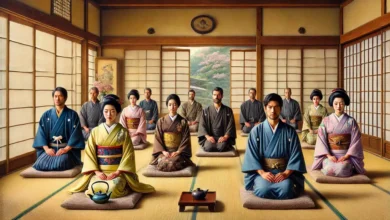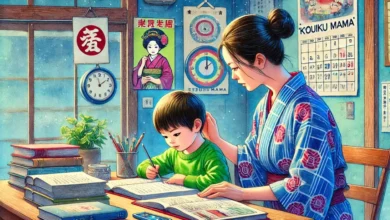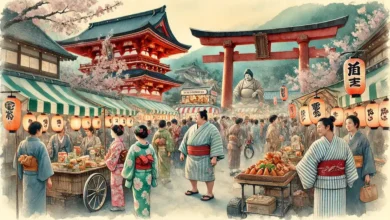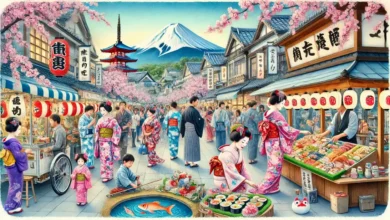Irezumi: Japan’s Irreplaceable Tattoo Culture
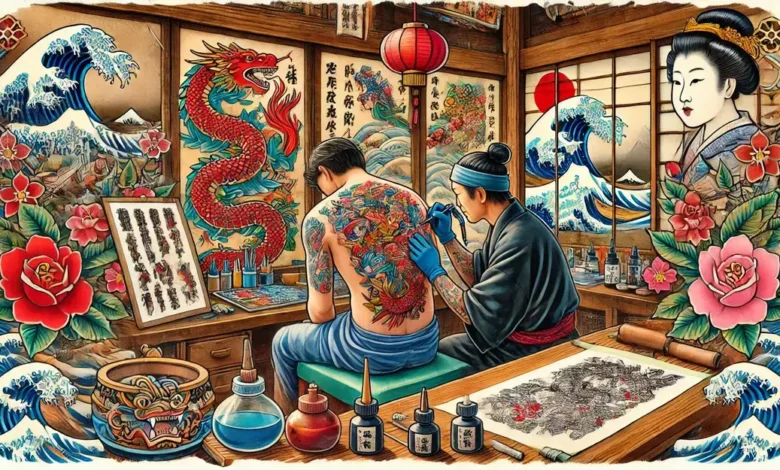
Irezumi, or Tattoos in Japan have a long history, going back to the Jōmon era, which was around 10,000 BCE. Back then, people used tattoos for spiritual reasons and decoration. But tattoos in Japan have had a tough time. They got linked with criminals and a gang called the yakuza. The Japanese government even banned tattoos for some time, which made people view them negatively. Today, some places like gyms, public baths, and hot springs don’t allow people with tattoos.
The Japanese word for tattoo is “irezumi”. Tattoos have been used in Japan for decoration and also as a punishment. The history of irezumi is interesting, from its simple beginnings to now.
Making a tattoo in Japan is a careful process. Artists use metal needles tied to silk thread and wooden handles. They use a special ink called Nara ink or zumi. This way of tattooing takes a lot of time and can be painful.
The artists who make these tattoos are called Horishi, and there aren’t many left. A Horishi usually has one or two students who work hard and learn the skill over many years.
Irezumi in the Edo period
The next big step in the history of tattoos happened during the Edo period in Japan. Artists used their art to stand up against the strict rules of the Tokugawa shogunate, a military dictatorship. This made irezumi, or tattooing, a form of art. The artists started using designs from woodblock prints in their tattoos. These designs were similar to funny woodblock prints called ukiyo-e.
Figure 2 shows how these designs often included pictures of famous heroes from books. The people in charge didn’t accept irezumi because of a belief from Confucius. This belief said that changing your body was like disrespecting your parents. Despite what most people think, tattoos were so popular that the samurai made them illegal. But, it was hard to enforce this rule, so people kept getting irezumi tattoos.

Irezumi in the 19th century
In the 1800s, when Western countries started to take interest in Japan, the Japanese government was worried about being taken over. So, they wanted to show a strong, civilized image to the world. They thought tattoos looked savage and didn’t fit with this image. So, in 1872, the Japanese emperors made tattoos illegal all over the country.
After this, it was mostly the Yakuza, a Japanese gang, that kept the tradition of tattooing alive. Because of this, many people in Japan think that if you have a tattoo, you’re part of the Yakuza. This makes people with tattoos face fear and unfair treatment from others. In 1948, the American soldiers who were in Japan ended the tattoo ban. But, this made many Japanese people dislike tattoos even more.

Traditional Japanese tattooing methods
In the past, the tattoo artist would decide the design of the tattoo. But now, it’s becoming popular to use ready-made designs or even bring your own. If you choose to get a traditional irezumi tattoo, you should know that it will take a long time, it might hurt, and it can be expensive. Tattooing your arms, thighs, and chest could take up to 5 years.
At first, tattoos were made using tools like chisels and burins, which are also used for wood engravings. The color came from a special ink called nara ink, or nara black, which was made from the soot of temple lamps. Once the ink is put under the skin, it turns a green-blue color.
A real Japanese tattoo should be done by a tattoo expert, called a horishi, using a traditional tool called a tebori. This is a bamboo stick with a metal needle tied to it with silk thread. The color is put under the skin bit by bit, poking at an angle. Nara black is still used as ink today, along with red, green, indigo, yellow, and mixed colors.
Before starting the tattoo, the artist talks a lot with the customer. Then, he suggests a design. If the customer likes the design, the artist starts by drawing the outlines by hand. Then, he slowly adds the colors and shadows. When the tattoo is finished, the artist usually signs it on the back.

The meanings and designs of Japanese tattoos
The dragon is a popular design in Japanese tattoos. It symbolizes water and rain, not fire, and stands for kindness and knowledge. Another common design is the koi fish. Koi are known for swimming upstream in the Yellow River, showing their strength and bravery. When they finish this tough journey, they turn into dragons. That’s why koi also symbolize endurance and positive change.

Snakes are also often seen in tattoos. They stand for knowledge and wisdom. When a snake sheds its skin, it’s seen as a sign of healing and starting fresh. A phoenix tattoo stands for rebirth and victory. A tiger tattoo shows bravery and strength, and it’s believed to protect against bad luck and evil spirits. A lion tattoo is for people who admire bravery.

Flowers are also common in Japanese tattoos. The lotus stands for understanding, knowledge, and enlightenment. Cherry blossoms, which are delicate, represent death. Chrysanthemums symbolize perfection and toughness. Roses stand for new beginnings and balance, but if they’re given with a stem, they mean recklessness and loss. The peony stands for beauty, the orchid for power and strength, and the hibiscus for kindness.
The Oni mask is another common design. It’s the face of a bad spirit or demon, and it’s linked with sickness, bad luck, and sadness in Shinto and Japanese mythology. A person with an Oni mask tattoo shows their belief in demons that punish bad people.

It’s interesting to note that Edward VII, the King of the United Kingdom, helped make tattoos popular in Europe. He brought a dragon irezumi tattoo from Japan. After the news got out, other rich people wanted to get tattoos, and the first European tattoo shop opened in 1870.

